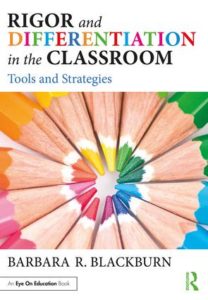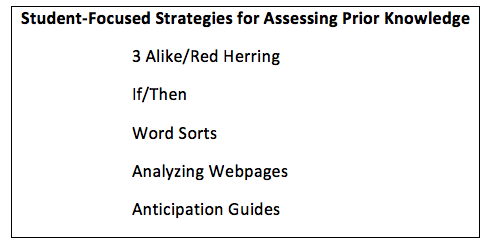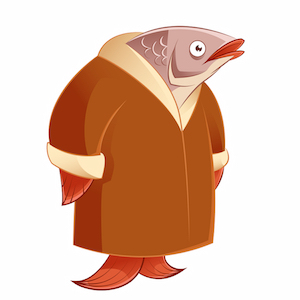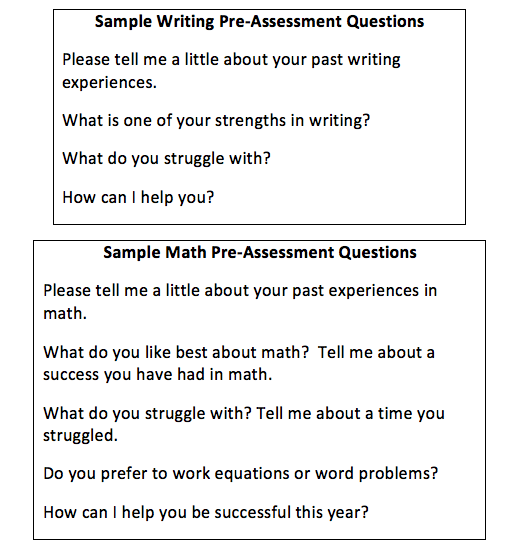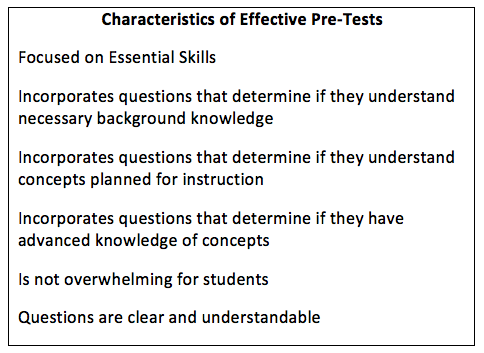Start the Lesson Strong with Pre-Assessments

Prior to teaching your lessons, it’s important to gauge where students are in their knowledge of the topic. If we don’t know where students are, it’s hard to determine what we need to do to help them learn at higher levels.
Let’s start by looking at the characteristics of five student-oriented strategies for pre-assessment, two teacher-directed options, and effective formal pre-tests.
Student-Oriented Strategies
Here are five instructional strategies that give students the opportunity to demonstrate their understanding prior to a lesson.
3 Alike/Red Herring
I sometimes wondered what my students would learn if I didn’t package everything together for them. One day, instead of telling them the objective for the day, I decided to let them figure it out. I named multiple cities, such as Raleigh, North Carolina, Sacramento, California, and Albany, New York. After a few seconds, one student shouted, “Hey, I know—those are all state capitals!”
This is an easy way to determine what students already know, and it can be used at any grade level. A pre-kindergarten teacher can use it to introduce the color of the day, pulling items out of a box. A science teacher can use this strategy to introduce elements or subatomic particles.
To increase the rigor, Lindsay Yearta uses the “Red Herring” game with her students. She gives multiple examples that are linked, but students must identify the red herring—the one that does NOT belong. They must also justify their choice. Again, based on their responses, you can see how much they know, and by shifting the focus to students generating information, it is more rigorous.
If/Then Statements
Jayne Bartlett, author of Outstanding Assessment for Learning in the Classroom, describes another rigorous method which can be used to assess prior knowledge. Using if/then statements, students identify a connection and apply it.
Sample Math If/Then Statements
on Multiplication and Division
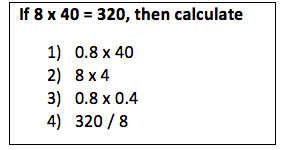
Analyzing Text from a Webpage
Another way to assess prior knowledge is through analysis of content from the internet (it can also help students learn to be wary of what they find!). Choose a webpage on a topic – say, the life cycle of fish in science class. Extract a portion (it may just be text or text + graphics), but make several changes to add errors to your selection. Ask students to evaluate the page you created to identify the mistakes. You’ll be able to see what they know about the content.
Word Sorts
Word sorts also allow you to see how much students know. In small groups, give students a set of word cards. Ask them to discuss the words and group them based on whether or not they fit in with the topic. Then, after reading a text, students revisit their word groupings and sort them again. To up the rigor even more, preview the topic and have students generate related words on their own before reading the text.
Anticipation Guides
Anticipation guides allow you to see a snapshot of what students know and don’t know about the content for a specific lesson or topic. They are simple to use, and student friendly (here’s a good tipsheet).
Teacher-Directed Options
Interviews and student conferences are excellent ways to gain insight into students’ prior learning and current level of understanding. They can provide more depth of information than other strategies, but they are also time-consuming. Because of the time involved, some teachers use written questions for students to complete independently.
In interviews and conferences, the teacher meets with students to assess their understanding of content. For either of these, the teacher plans a series of questions to ask a student/students about their learning. Although typically used as formative assessment during the lesson, these techniques can also be used in a pre-assessment situation.
Pre-Tests
I’ve known teachers who use a pre-test for the beginning of the year, including a broad range of questions to identify topics which might need less instruction as the year progresses. A far more effective approach in my experience is to use pre-testing to measure students’ understanding of specific key topics, which usually means a learning unit, such as a two-week study of landforms. Whatever approach you take toward formal pre-testing, keep in mind the characteristics of effective pre-tests.
Conclusion
Pre-Assessments can help us tailor our instruction to meet the needs of every student. It’s important to choose the ones that can help you best understand your particular students in any given class.
___________________________
